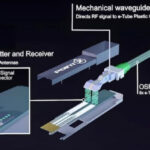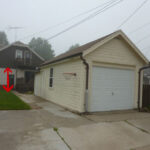In modern power distribution systems, underground power lines play an increasingly important role. Instead of running on utility poles like traditional overhead lines, these cables are buried below ground, providing a safer and more reliable way to transmit electricity. This article explains what underground power lines are, how they work, their key components, and why they are becoming a preferred solution in urban and industrial settings.

What Are Underground Power Lines?
Underground power lines — also called underground electric lines or underground electrical cables — are insulated conductors installed below the earth’s surface to distribute electricity. They serve the same purpose as overhead power lines but are protected by layers of insulation, shielding, and outer sheathing that make them resistant to moisture, chemicals, and mechanical stress.
These cables are typically used in cities, industrial areas, and sensitive environments where overhead lines would be impractical or visually intrusive.
How Underground Power Lines Work
An underground cable transmits electrical energy through a conductor, usually made of copper or aluminum, surrounded by several protective layers. Power is delivered from substations to residential, commercial, or industrial facilities through underground conduits or ducts. The design helps minimize power interruptions caused by storms, falling trees, or environmental exposure.
Underground systems are often connected to transformers, junction boxes, and switchgear equipment for efficient control and distribution.
Main Components of an Underground Power Cable
A typical underground electricity cable consists of the following layers:
Conductor: Usually copper or aluminum, responsible for carrying electric current.
Insulation: Often made of XLPE (cross-linked polyethylene) or EPR (ethylene propylene rubber), providing dielectric strength and temperature resistance.
Metallic Shield or Screen: Controls the electric field and prevents interference.
Armor Layer: Steel wire or tape provides mechanical protection, especially in direct burial applications.
Outer Sheath: Typically PVC or polyethylene, offering resistance to water, chemicals, and corrosion.
These layers together ensure the cable’s safety and durability, even under harsh underground conditions.
Advantages of Underground Power Lines
Underground cabling systems provide multiple advantages compared to traditional overhead lines:
Improved Safety: No exposed conductors reduce the risk of electric shock or fire.
Better Aesthetics: Cables are hidden underground, keeping streets and landscapes clean.
Weather Resistance: Immune to wind, snow, ice, and storm damage.
Lower Maintenance: Fewer interruptions and less frequent repairs.
Reduced Electromagnetic Interference (EMI): Beneficial in residential and sensitive electronic environments.
Enhanced Reliability: Stable operation and less downtime.
Disadvantages and Challenges
While underground electrical lines offer many benefits, they also present certain challenges:
Higher Installation Cost: Burying cables and installing conduits require significant labor and equipment.
Difficult Maintenance: Faults are harder to locate and repair compared to overhead lines.
Thermal Limitations: Underground environments make heat dissipation more difficult.
Moisture Intrusion Risk: Without proper sealing, water ingress can cause insulation failure.
Common Types of Underground Cables
Depending on voltage level and application, the most common types of underground cables (UG cables) include:
Low-voltage underground cables (≤1 kV) – Used for residential power distribution.
Medium-voltage cables (1–35 kV) – Common in urban and commercial grids.
High-voltage underground cables (≥35 kV) – Used for long-distance or heavy-load transmission.
Each cable type is designed to balance flexibility, insulation performance, and environmental protection.
Applications of Underground Power Lines
Underground electricity cables are widely used in:
Urban power distribution networks
Industrial plants and refineries
Airports, ports, and tunnels
Renewable energy systems (solar and wind farms)
Smart cities and data centers
They are ideal wherever space is limited or visual impact must be minimized.
Future of Underground Power Distribution
With increasing demand for reliable and sustainable electricity infrastructure, the global shift toward underground cabling is accelerating. Many modern cities are upgrading old overhead grids to underground systems, improving resilience against climate-related disruptions.
Technological advancements — such as XLPE insulation, fiber-optic monitoring, and improved fault-detection systems — are making underground power lines more efficient and cost-effective than ever.
Conclusion
Underground power lines are a vital component of today’s smart and resilient power infrastructure. While installation costs remain higher than overhead lines, the long-term benefits — including safety, reliability, and aesthetics — make them a worthwhile investment for the future of energy distribution.
⚡ Looking for High-Quality Underground Cables?
TOT Wire & Cable supplies a full range of low-, medium-, and high-voltage underground power cables designed for durability, performance, and cost efficiency.
👉 Contact us today to discuss your project needs and get a competitive quote!





